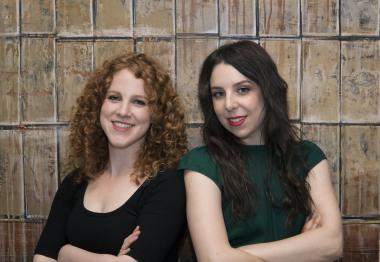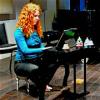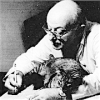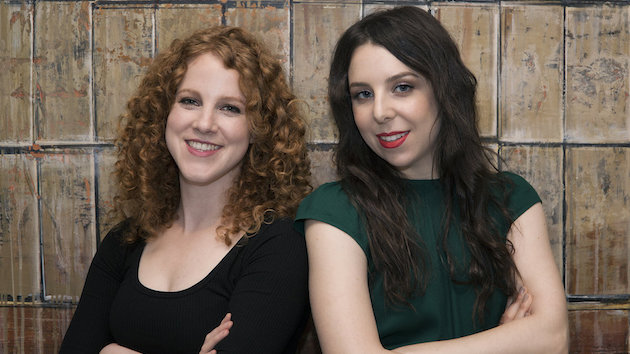
A premiere music video from Chordless, the vocal-piano duo featuring soprano Sara LeMesh and pianist Allegra Chapman, provides a futuristic model for classical music.
In the debut video filmed in late February 2020 in Mill Valley — just a few weeks shy of COVID-19 shelter-in-place orders that would have delayed or made the project nearly impossible — we see Chapman and LeMesh in multiple locations. Chapman drifts back-and-forth past a shadowy Polaroid photo of the two friends marked “Oct 2015” that is displayed in a privately rented home in Mill Valley; mesmerizing closeups show LeMesh walking barefoot, torquing her arms and torso in the breeze, or standing motionless to sing straight into the camera lens as gentle waves lap behind her on Muir Beach. Other parts filmed, edited, and sound designed using DaVinci Resolve Studio 16 by filmmaker Joseph Dwyer are shot on the Dipsea Trail near Mill Valley, and in downtown Old Mill Park. Chapman curls up under towering redwoods, blinks her eyes open — or not — under dappled sunlight, descends and ascends a stone stairway.
Undergirding the visuals and giving the San Francisco-based duo’s first video release its title is George Crumb’s haunting “The Night in Silence Under Many a Star,” drawn from the composer’s Apparition: Elegiac Songs and Vocalises for Soprano and Amplified Piano. Text used by Crumb in the 1979 song cycle’s first and repeating last sections is from Walt Whitman’s poem, When Lilacs Last in the Dooryard Bloom’d, which references separation, loss, death, and comfort sought in trees, stars, and coastal shores. Sound Engineer Matt Carr used Sequoia audio software for recording and editing, and Izotope RX7 software for mastering the video. The results are impressive, illuminating the nuanced colors of LeMesh’s voice and capturing the reverberant brightness and softness of Chapman’s hand-strummed piano strings.
Chordless will screen the video as part of a free, one-hour virtual event May 29. While continuing to follow lockdown orders in separate locations — Chapman in San Francisco, LeMesh in New York City — the artists will hold a virtual Q&A moderated by public relations professional Kate McKinney. Joined by Carr and Dwyer, LeMesh says in a phone interview they will address big questions facing classical musicians today, such as, “How will digital media shape artists’ and audience’s performance experience beyond the pandemic era?”
Asked in separate interviews not only what will happen post-pandemic, but what has been their experience prior to the pandemic, the musicians say classical music artists and organizations have lagged behind others in the music industry.
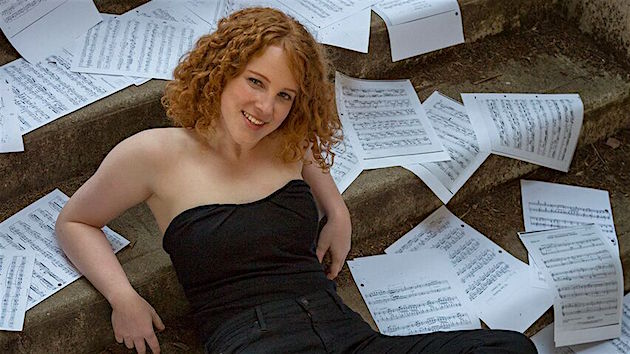
“There’s been less embracing of technology, overall,” says Chapman. “It’s interesting that this time is forcing major classical music organizations to explore digital means of distributing the art form. There were things in the past that were engaging with audiences, but not as much online with major classical organizations — at least not like bands and artists in other parts of the music field.” The learning curve is huge, she adds, with artists learning to livestream, video edit, and develop new online avenues to replicate live performances.
LeMesh says, “Digital media were already having impact on classical musicians, but they relied on agencies to develop a branding image. Now, people are able to self-create an online presence on social media. Each subsequent year it’s become easier.”
LeMesh says sharing who you are has been gaining importance, meaning the biggest shift is a movement to film and presenting authenticity, not perfection. “Being on camera, livestreaming concerts; especially with classical music, there was distance before — between your body and the audience in a concert hall. Now, people are accustomed to seeing your face close up when it’s on digital media. You’re facilitating that yourself and the parameters of what’s acceptable aren’t necessarily perfectionism. With YouTube in the early 2000s, there was Facebook and it was about being close, seeing flaws, not distancing. What are the expectations of a concert from your living room? Seeking intimacy and closeness — there’s room for growth.”
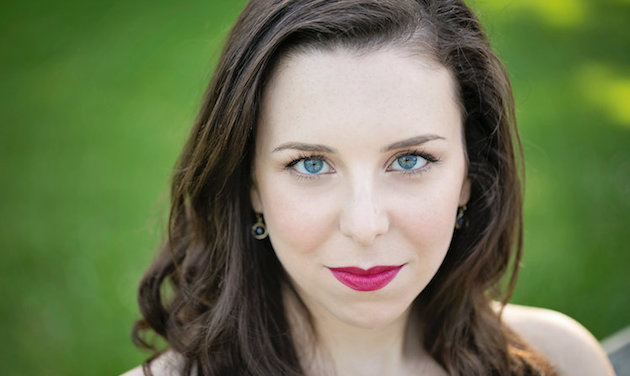
Artists will not only have to gain expertise in acting and movement for tight camera shots, but also purchase, learn to operate, or gain access to better lighting equipment, stronger broadcast values, and unique film locations that enhance the visual elements of presentations.
Despite the enormous challenges and knowing many musicians are faced with months if not years of postponements and cancellations, LeMesh says, “I’m an optimist and don’t think the art form will dissolve in a puddle. We need and crave art in our lives. Technology will never replace live performances. Digital media’s role in democratizing experience will continue to gain importance. People will find ways to monetize sharing content online, alongside live performances.”
If LeMesh is correct, presenters and musicians will have to reconsider performance venues. Outdoor structures and indoor spaces with strategic circulation engineering and new seating designs will need to supplant traditional, stadium size symphony halls. “If we are able to sit on a plane, packed like sardines, we’ll find a way to circulate air and be in a theater,” she predicts.
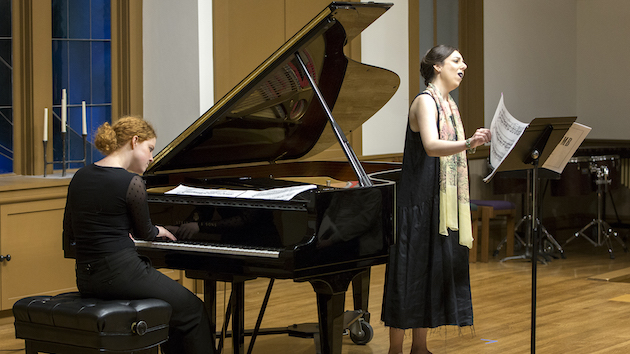
In the meantime, the video project provides a forecast for audiences — and offered to the artists the kind of incentive that keeps them enthused and energized about classical music’s future. LeMesh discovered “you can go nuts” with a pianissimo marking when the mic is inches from your mouth. Letting go of Jan DeGaetani’s version (the soprano commissioned the work and premiered it with pianist Gilbert Kalish in 1981) was vital. “Letting go of preconceptions about articulation and dynamics took me at least four to five cuts to make one whole take to be mastered later. Especially because of opera training, context, colors, and other aspects are so important.”
Chapman says restraint and mood lighting were helpful while recording the music on the Kawai piano in St. Stephen’s Episcopal Church in Belvedere, California. But “needling” or “voicing down” the hammers to reduce the instrument’s “bright ping” was simple compared to becoming an actor. “I don’t have that way of expressing myself (facially) the way singers do,” she says. “I don’t experience the music with my body in my expressions. Making my face look natural was a huge challenge to me. I had to do that yellow backpack unzipping clip at least a dozen times. That was surprising.”
The ZOOM presentation includes an interactive audience Q&A. For more information, visit chordlessduo.com or go to the Eventbrite link.

